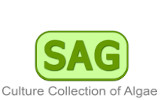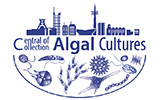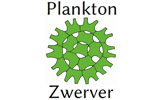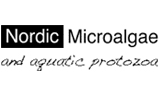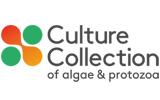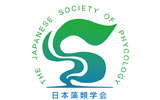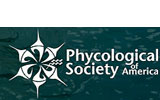Nitella gracilis (J.E.Smith) C.Agardh 1824
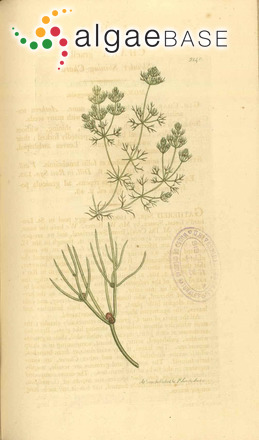
Current name:
Nitella gracilis (J.E.Smith) C.Agardh
Original plate; specimen from Sussex - 20 January 2024. Out of copyright
Publication Details
Nitella gracilis (J.E.Smith) C.Agardh 1824: 125
Published in: Agardh, C.A. (1824). Systema algarum. pp. [i]-xxxvii, [1]-312. Lundae [Lund]: Literis Berlingianis [Berling].
Publication date: probably September 1824
Type Species
The type species (lectotype) of the genus Nitella is Nitella opaca (C.Agardh ex Bruzelius) C.Agardh.
Status of Name
This name is of an entity that is currently accepted taxonomically.
Basionym
Chara gracilis J.E.Smith
Type Information
Type locality: "GATHERED Sept. 4 , 1809, in a boggy pool in St. Leonard's forest, Sussex, [England] by Mr. W . Borrer. We have the same,
(found by M. Du Cros), from Switzerland, and we are persuaded the above synonyms belong to it, though in the Fl. Brit., they are referred to C. vulgaris, t. 336, in its unincrusted state, we having at that time not investigated the plant here delineated."; (Smith 1809-1810: pl. 2140) Lectotype (St. Leonard's forest, Sussex; designated by Korsh in Arbeitsgruppe Armleuchteralgen Deutschland 2015: 435): Mr W. Borrer; Sept 4, 1809; boggy pool; BM; (Arbeitsgruppe Armleuchteralgen Deutschland 2015: 435)
Origin of Species Name
Adjective (Latin), thin, slender (Stearn 1983).
General Environment
This is a freshwater species.
Description
The plants are to 20 cm high, slender. The axis is less than 0.5 mm in diameter. The branchlets are divided 2 or 3 times. The end segments (rays) are 2-3 celled. The end cells are tapering (they are as broad as the penultimate cells). The species is monoecious. The oogonia are small, up to 450 µm long and 400 µm wide. The oospore is dark brown and has a granulate membrane. The antheridia are between 200-300 µm in diameter.
Habitat
Nitella gracilis is a freshwater species, and it is found in many types of habitats; Lobelia-lakes, mesotrophic lakes or in small waters like ditches, pits and ponds. The species has most common been found in shallow water.
N. gracilis is reported both as annual and perennial, but is most probably annual it this area (Olsen 1944).
The plants are fertile from June and onwards, and ripe oospores have been found from August to October.
Created: 11 April 2002 by M.D. Guiry.
Last updated: 20 January 2025
Verification of Data
Users are responsible for verifying the accuracy of information before use, as noted on the website Content page.
Distributional note
Nitella gracilis is a cosmopolitan species and it is widespread in Europe, but not common. In the Nordic countries it is found in Sweden (Hasslow 1931, Blindow 1994), Denmark (Olsen 1944), Norway (Langangen 1994, 2007) and Finland (Langangen et al. 2002). The species has disappeared from many original localities, and it is threatened in the whole distribution range.
In Fennoscandia N. gracilis has a southern distribution, and the European distribution has a northern border here. The old locality in Piteå (Sweden) can be an indication for a wider distribution in the area - (08 January 2010)
Habitat note
Calcifuge species, in poorly mineralised waters; ombrotrophic habitats, such as flooded depressions within meadows and crops, and in peatlands (Muller et al., 2017). - (31 October 2017) - G.M. Guiry
Linking to this page: https://www.algaebase.org/search/species/detail/?species_id=35596
Citing AlgaeBase
Cite this record as:
M.D. Guiry in Guiry, M.D. & Guiry, G.M. 20 January 2025. AlgaeBase. World-wide electronic publication, National University of Ireland, Galway. https://www.algaebase.org; searched on 05 April 2025
 Request PDF
Request PDF

